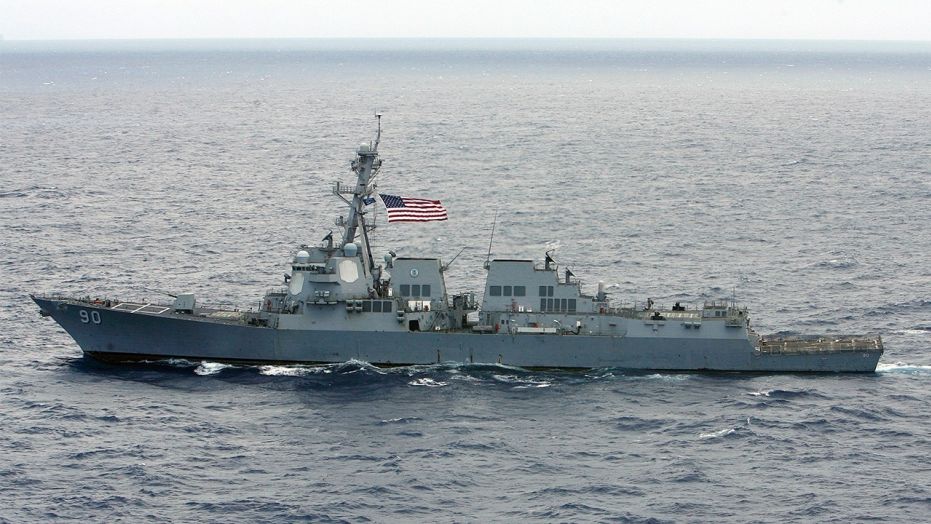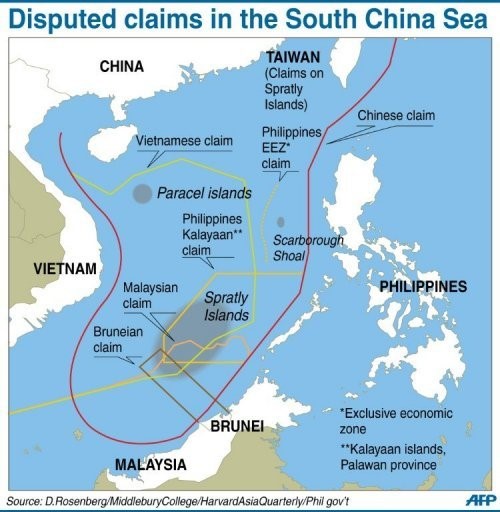Tussle over South China Sea
October 11, 2017 | Expert Insights

A US warship called the USS Chafee sailed near disputed islands claimed by China in the disputed South China Sea.
China has responded by lodging a “stern” protest.
Background
The South China Sea is at the heart of a land and water dispute between China, the United States and much of Southeast Asia. China’s claim to the region is historic going back to the Xia and Han dynasties. The US has maintained that region was part of the international waters. Other countries that are disputing South China Sea include, Malaysia, Indonesia, the Philippines, and Vietnam.
One of the reasons why the South China Sea is so vital to these countries is due to the strategic advantage it provides. If China had complete control of the region, then it would be able to control a major trade route. It would be able to disrupt trade shipments that pass through this region to East and Southeast Asia. Currently, $5.3 trillion worth of trade passes through the South China Sea.
South China Sea’s strategic position isn’t the only reason why the nations are battling for control over the region. Natural gas reserves that exist in the region are estimated to total around 7,500 km³ (266 trillion cubic feet). Reed Bank, which is located near the coast of Philippines, is believed to hold large reserves of oil and natural gas. The region also holds reserves of minerals such as titaniferous magnetite, zircon, monazite, tin, gold, and chromite.
In the recent years, US and China have escalated their diplomatic conflict over the region. In July 2017, a US warship called the USS Stethem (a guided-missile destroyer) sailed within 12 nautical miles of Triton Island. This island is China, Taiwan and Vietnam. Similarly, in August 2017, the USS John S McCain sailed within six nautical miles of Mischief Reef. The Chinese military had reportedly told the US to turn around 10 times during the Fonop (freedom of navigation) operation. The US operation lasted six hours.

Analysis
The US has argued that all of its operations in the South China Sea is in relation to what it considers China’s attempts to stifle freedom of navigation in the strategic waters. The latest US warship to sail near islands claimed by China is USS Chafee. It is a guided-missile destroyer. It is a navy destroyer. These operations are called Fonop (freedom of navigation).
The warship sailed towards the Paracel Islands. This region has been in control of China since 1974. However, it has been claimed by Taiwan as well as Vietnam. It is a largely unpopulated archipelago. In 2014, it was the site to an escalating conflict between China and Vietnam. This was due to the fact a Chinese state-owned company deployed an oil rig in waters off the Paracels. The drilling of Hai Yang Shi You 981 ended in August 2014 and China withdrew completely.
In response to US’ actions China lodge lodged a protest with America. China’s ministry spokeswoman Hua Chunying said, “The US vessel action violated Chinese laws and relevant international laws, undermined China's sovereignty and security interests. China is firmly opposed to that and has lodged stern presentations with the US. China has often argued that US’ Fonop operations are a threat to the sovereignty and security of the nation.
Assessment
Our assessment is that given South China Sea’s value in geopolitics, it is unlikely that any of the nations who have laid a claim to its territory will be able to resolve the problem through bilateral talks. China and the US are aware of the strategic importance of region. Any nation that has complete control over South China Sea will be able to control trillions of dollars’ worth of trade and have access to rich oil reserves. Perhaps a forced international arbitration could bring about a resolution.








Comments